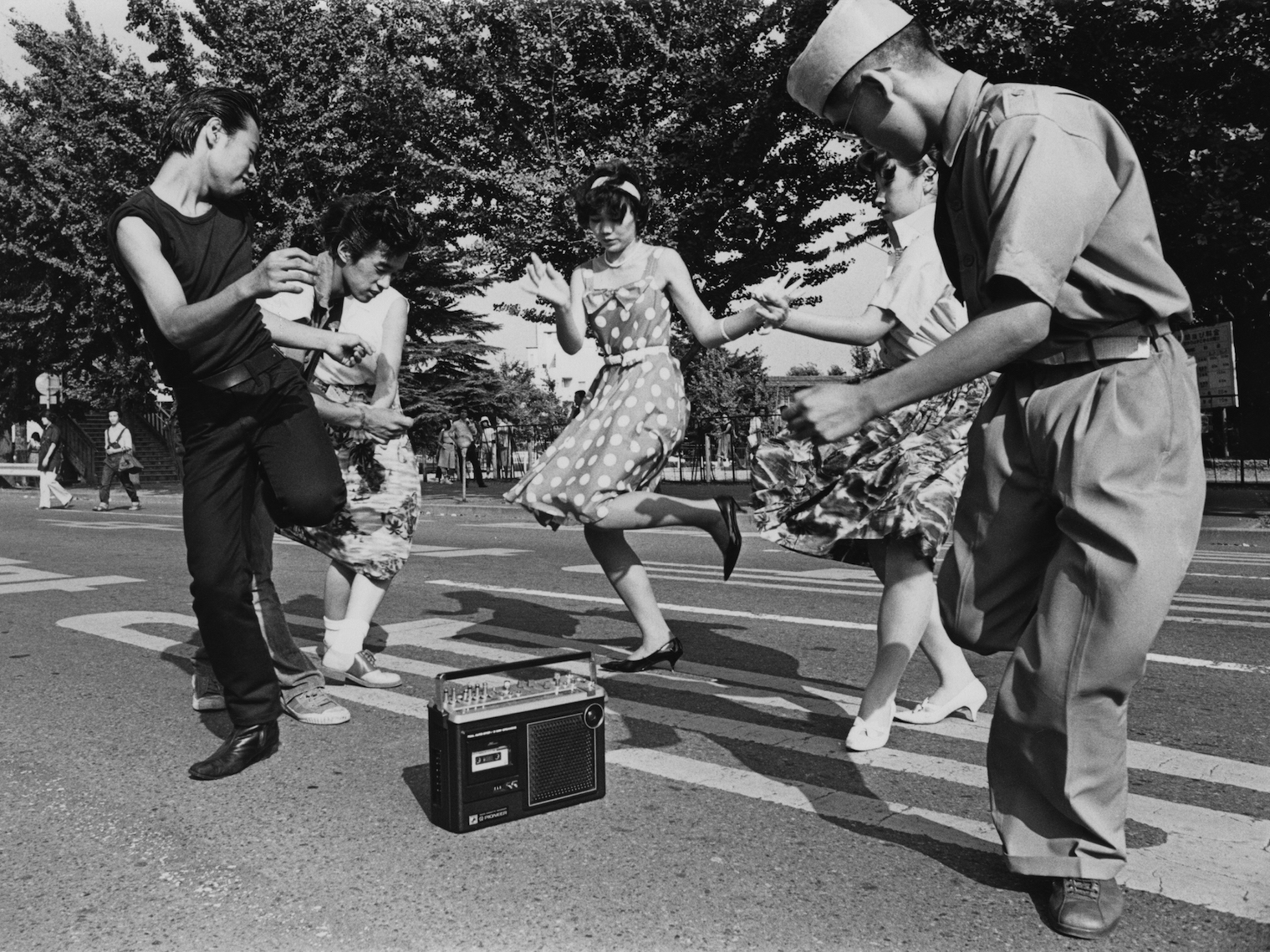Between the end of World War II and the end of the Cold War, Japan underwent what has been coined an ‘economic miracle’. By the end of the ‘golden 60s’, Japan was the second-largest economy in the world.
Writing for Forbes, Jean-Pierre Lehmann says “It is difficult for those who were not there to imagine what a dynamic place Japan was during the 1960s. Japanese, at virtually all levels, were outward looking, internationally curious and eager to learn.”
During this time of economic prosperity, Japan was investing heavily in infrastructure and undergoing deep social change.
Historian, Alexandra Munroe, described the period as “undoubtedly the most creative outburst of anarchistic, subversive and riotous tendencies in the history of modern Japanese culture.”
To sum up, this was an incredibly vibrant, tumultuous time to be in Japan – and it was all captured beautifully on camera. These photos are ordered from oldest to most recent:
1960: Tokyo riot police arrest a student demonstrating for the return of Okinawa and the abrogation of the US-Japan Security Treaty.

1964: FaceTime has been around longer than you thought — Japanese telephone operators in Tokyo use the new View Phone, made by Toshiba Shibaura Electric Co, with which they can see the caller, and the caller can see them.

1964: Torchbearer Yoshinori Sakai mounts the steps to light the cauldron at the opening ceremony of the Summer Olympic Games at the National Olympic Stadium.

1964: The British team arrive at the Summer Paralympic Games in Tokyo.

1966: The Beatles play in the first stage of their Japanese tour, at the Nippon Budokan Hall.

1966: Over 2,000 young violinists between the ages of 3 and 10 playing Bach and Mozart in Budokan Hall during a mass violin concert.

1968: The shop floor of the Yamaha Motor Company in the Hamamatsu factory.

1968: A student is arrested by riot police during a demonstration in Tokyo against the visit to Sasebo of the United States nuclear-powered aircraft carrier, 'Enterprise'.

1969: The three US astronauts from the Apollo 11 mission take part in a tickertape parade in Tokyo's Ginza district, during a two-day visit to Japan on their Goodwill Tour of the world.

1970: The Tokyo Monorail from Haneda Airport to Hamamatsucho Station.

1970: 'Pushers' cram commuters on at Tokyo's Shinjuku station during rush hour. They are employed to pack as many passengers as possible into the 'sardine' specials, especially in winter when commuters wear heavy overcoats.

1970: 4,500 Japanese teenagers take part in a calligraphy contest — the given text means 'Beautiful springtime in Japan'.

1970: Part-time artist Koichi Akahira supports himself as a shoe-shiner outside the main Tokyo railway station.

1971: Japanese golf enthusiasts use a three-tiered driving platform at Shiba Park near the centre of Tokyo.

1975: Christmas shoppers hit Tokyo's Ginza district two days before the big day, despite an economic slump.

1972: A platform attendant passes a baby into the window of a crowded train in Tokyo during a strike by Japanese railway workers.

1973: Revellers enjoy a summertime drink in one of Tokyo's rooftop beer gardens.

1975: Commuters walk to work along the rail tracks. A strike by the Council of Public Corporation Workers' Union crippled the train system.

1977: Watched by the police, crowds in Tokyo keep their eyes glued to a board on which are to be displayed the winning numbers of the Grand National Lottery. Thousands flocked to the city to buy their tickets, in the hope of winning the first prize of 10,000,000 yen.

1977: Prince Hiro, aka Crown Prince Naruhito of Japan, turns 17 and receives a lecture from Tomohide Gomi, Honorary Professor of Tokyo University, on the 'Manyoshu' poetry anthology. What better way to spend your birthday?

1977: A stadium in Tokyo is packed with 1,500 cars for a three-day sale.

1978: Teenagers dance the twist around a radio cassette recorder in a street in the Harajuku district of Shibuya, Tokyo.


